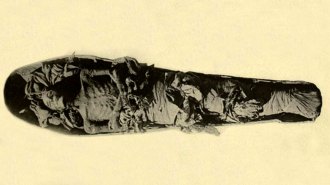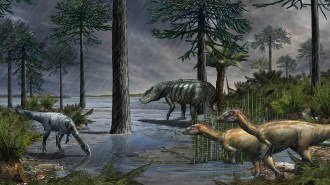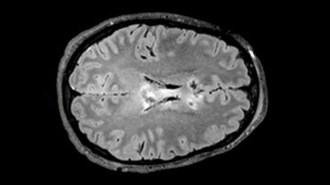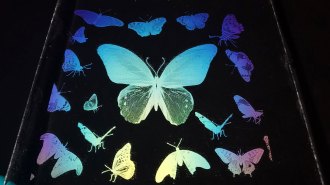All Stories
-

-

Good things come to astronomers who wait
Editor in chief Nancy Shute discusses the long-awaited launch of the James Webb Space Telescope and an update on our SN 10: Scientists to Watch.
By Nancy Shute -
 Health & Medicine
Health & MedicineA new antiviral pill cuts COVID-19 hospitalization and death rates
Merck says its drug, molnupiravir, stops viral replication and can be taken right after a COVID-19 diagnosis.
-
 Chemistry
ChemistryInk analysis reveals Marie Antoinette’s letters’ hidden words and who censored them
Chemical analyses of letters written by Marie Antoinette solve a French Revolution mystery: Who censored the queen?
-
 Climate
Climate2020 babies may suffer up to seven times as many extreme heat waves as 1960s kids
Children born in 2020 will bear a much heavier burden from climate change during their lifetimes than those born in 1960, a new analysis finds.
-
 Anthropology
Anthropology50 years ago, X-rays revealed what ancient Egyptians kept under wraps
In the 1970s, scientists used X-rays to unravel mummy secrets. Now, advances in technology are providing unprecedented views of ancient Egyptians.
By Bruce Bower -
 Earth
EarthA volcano-induced rainy period made Earth’s climate dinosaur-friendly
New physical evidence links eruptions 234 million to 232 million years ago to climate changes that let dinosaurs start their climb to dominance.
By Megan Sever -
 Neuroscience
NeuroscienceA blood test may help predict recovery from traumatic brain injury
High levels of a key blood protein point to brain shrinkage and damage to message-sending axons, providing a biomarker for TBI severity and prognosis.
-
 Science & Society
Science & SocietyThe spoken word album ‘Experimental Words’ weaves rhyme with reason
The spoken word album Experimental Words, a collaboration between researchers and poets, explores the intersection between science and art.
By Aina Abell -
 Genetics
GeneticsAll identical twins may share a common set of chemical markers on their DNA
Identical twins may share a set of unique chemical tags on their DNA that could be used to identify individuals who were conceived as identical twins.
-
 Materials Science
Materials ScienceThese colorful butterflies were created using transparent ink
See-through printer ink can create a whole spectrum of colors when printed in precise, microscale patterns.
-
 Health & Medicine
Health & Medicine50 years ago, scientists found a link between aspirin use and pregnancy complications
Scientists are still learning about the risks and benefits of taking aspirin at each stage of pregnancy.